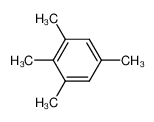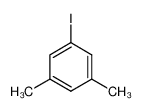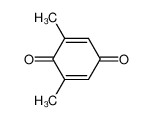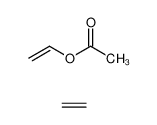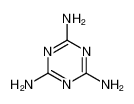| Product name | m-Xylene |
|---|
| Product number | - |
|---|---|
| Other names | 1,3-xylene |
| Identified uses | For industry use only. Intermediates,Laboratory chemicals |
|---|---|
| Uses advised against | no data available |
| Company | MOLBASE (Shanghai) Biotechnology Co., Ltd. |
|---|---|
| Address | Floor 4 & 5, Building 12, No. 1001 North Qinzhou Road, Xuhui District, Shanghai, China |
| Telephone | +86(21)64956998 |
| Fax | +86(21)54365166 |
| Emergency phone number | +86-400-6021-666 |
|---|---|
| Service hours | Monday to Friday, 9am-5pm (Standard time zone: UTC/GMT +8 hours). |
Flammable liquids, Category 3
Acute toxicity - Dermal, Category 4
Skin irritation, Category 2
Acute toxicity - Inhalation, Category 4
2.2 GHS label elements, including precautionary statements| Pictogram(s) | 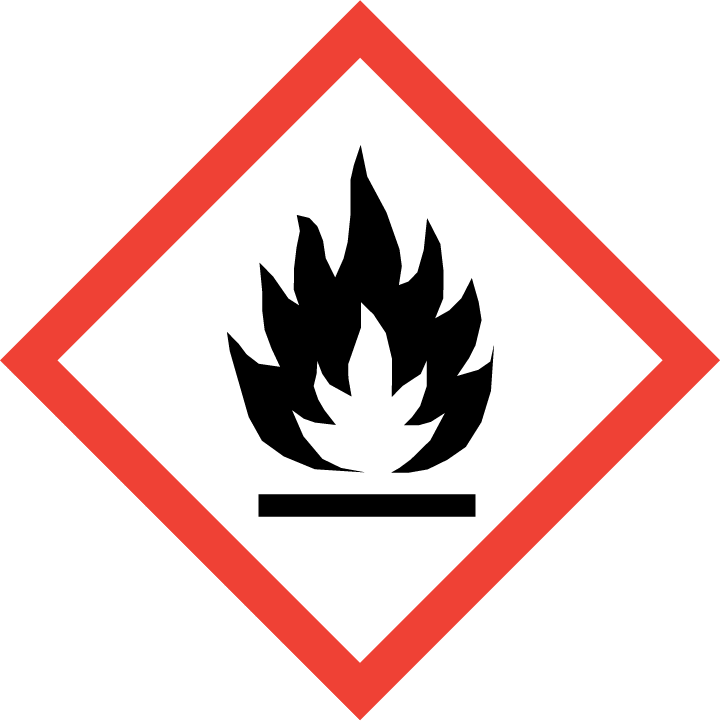 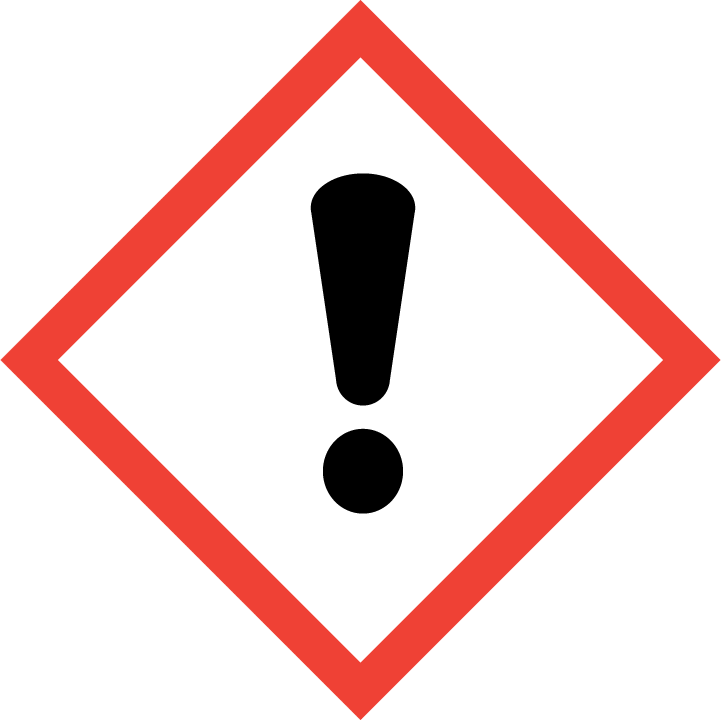 |
|---|---|
| Signal word | Warning |
| Hazard statement(s) | H226 Flammable liquid and vapour H312 Harmful in contact with skin H315 Causes skin irritation H332 Harmful if inhaled |
| Precautionary statement(s) | |
| Prevention | P210 Keep away from heat, hot surfaces, sparks, open flames and other ignition sources. No smoking. P233 Keep container tightly closed. P240 Ground and bond container and receiving equipment. P241 Use explosion-proof [electrical/ventilating/lighting/...] equipment. P242 Use non-sparking tools. P243 Take action to prevent static discharges. P280 Wear protective gloves/protective clothing/eye protection/face protection. P264 Wash ... thoroughly after handling. P261 Avoid breathing dust/fume/gas/mist/vapours/spray. P271 Use only outdoors or in a well-ventilated area. |
| Response | P303+P361+P353 IF ON SKIN (or hair): Take off immediately all contaminated clothing. Rinse skin with water [or shower]. P370+P378 In case of fire: Use ... to extinguish. P302+P352 IF ON SKIN: Wash with plenty of water/... P312 Call a POISON CENTER/doctor/…if you feel unwell. P321 Specific treatment (see ... on this label). P362+P364 Take off contaminated clothing and wash it before reuse. P332+P313 If skin irritation occurs: Get medical advice/attention. P304+P340 IF INHALED: Remove person to fresh air and keep comfortable for breathing. |
| Storage | P403+P235 Store in a well-ventilated place. Keep cool. |
| Disposal | P501 Dispose of contents/container to ... |
none
3.Composition/information on ingredients 3.1 Substances| Chemical name | Common names and synonyms | CAS number | EC number | Concentration |
|---|---|---|---|---|
| m-Xylene | m-Xylene | 108-38-3 | none | 100% |
Consult a physician. Show this safety data sheet to the doctor in attendance.
If inhaledFresh air, rest. Refer for medical attention.
In case of skin contactRemove contaminated clothes. Rinse and then wash skin with water and soap.
In case of eye contactFirst rinse with plenty of water for several minutes (remove contact lenses if easily possible), then refer for medical attention.
If swallowedRinse mouth. Do NOT induce vomiting. Refer for medical attention .
4.2 Most important symptoms/effects, acute and delayedVapors cause headache and dizziness. Liquid irritates eyes and skin. If taken into lungs, causes severe coughing, distress, and rapidly developing pulmonary edema. If ingested, causes nausea, vomiting, cramps, headache, and coma; can be fatal. Kidney and liver damage can occur. (USCG, 1999)
4.3 Indication of immediate medical attention and special treatment needed, if necessaryImmediate First Aid: Ensure that adequate decontamination has been carried out. If patient is not breathing, start artificial respiration, preferably with a demand-valve resuscitator, bag-valve-mask device, or pocket mask, as trained. Perform CPR if necessary. Immediately flush contaminated eyes with gently flowing water. Do not induce vomiting. If vomiting occurs, lean patient forward or place on left side (head-down position, if possible) to maintain an open airway and prevent aspiration. Keep patient quiet and maintain normal body temperature. Obtain medical attention. /Aromatic hydrocarbons and related compounds/
5.Fire-fighting measures 5.1 Extinguishing media Suitable extinguishing mediaSuitable extinguishing media: Use water spray, alcohol-resistant foam, dry chemical, or carbon dioxide.
5.2 Specific hazards arising from the chemicalBehavior in Fire: Vapor is heavier than air and may travel considerable distance to a source of ignition and flash back. (USCG, 1999)
5.3 Special protective actions for fire-fightersWear self-contained breathing apparatus for firefighting if necessary.
6.Accidental release measures 6.1 Personal precautions, protective equipment and emergency proceduresUse personal protective equipment. Avoid dust formation. Avoid breathing vapours, mist or gas. Ensure adequate ventilation. Evacuate personnel to safe areas. Avoid breathing dust. For personal protection see section 8.
6.2 Environmental precautionsPersonal protection: filter respirator for organic gases and vapours adapted to the airborne concentration of the substance. Ventilation. Remove all ignition sources. Do NOT let this chemical enter the environment. Collect leaking and spilled liquid in sealable containers as far as possible. Absorb remaining liquid in sand or inert absorbent. Then store and dispose of according to local regulations.
6.3 Methods and materials for containment and cleaning upACCIDENTAL RELEASE MEASURES: Personal precautions, protective equipment and emergency procedures: Use personal protective equipment. Avoid breathing vapors, mist or gas. Ensure adequate ventilation. Remove all sources of ignition. Evacuate personnel to safe areas. Beware of vapors accumulating to form explosive concentrations. Vapors can accumulate in low areas. Environmental precautions: Prevent further leakage or spillage if safe to do so. Do not let product enter drains. Discharge into the environment must be avoided. Methods and materials for containment and cleaning up: Contain spillage, and then collect with an electrically protected vacuum cleaner or by wet-brushing and place in container for disposal according to local regulations.
7.Handling and storage 7.1 Precautions for safe handlingAvoid contact with skin and eyes. Avoid formation of dust and aerosols. Avoid exposure - obtain special instructions before use.Provide appropriate exhaust ventilation at places where dust is formed. For precautions see section 2.2.
7.2 Conditions for safe storage, including any incompatibilitiesFireproof. Separated from strong oxidants and strong acids.Keep container tightly closed in a dry and well-ventilated place. Containers which are opened must be carefully resealed and kept upright to prevent leakage. Storage class (TRGS 510): Flammable liquids.
8.Exposure controls/personal protection 8.1 Control parameters Occupational Exposure limit valuesRecommended Exposure Limit: 10 Hr Time-Weighted Avg: 100 ppm (435 mg/cu m).
Recommended Exposure Limit: 15 Min Short-Term Exposure Limit: 150 ppm (655 mg/cu m).
Biological limit valuesno data available
8.2 Appropriate engineering controlsHandle in accordance with good industrial hygiene and safety practice. Wash hands before breaks and at the end of workday.
8.3 Individual protection measures, such as personal protective equipment (PPE) Eye/face protectionSafety glasses with side-shields conforming to EN166. Use equipment for eye protection tested and approved under appropriate government standards such as NIOSH (US) or EN 166(EU).
Skin protectionWear impervious clothing. The type of protective equipment must be selected according to the concentration and amount of the dangerous substance at the specific workplace. Handle with gloves. Gloves must be inspected prior to use. Use proper glove removal technique(without touching glove's outer surface) to avoid skin contact with this product. Dispose of contaminated gloves after use in accordance with applicable laws and good laboratory practices. Wash and dry hands. The selected protective gloves have to satisfy the specifications of EU Directive 89/686/EEC and the standard EN 374 derived from it.
Respiratory protectionWear dust mask when handling large quantities.
Thermal hazardsno data available
9.Physical and chemical properties| Physical state | clear, colorless liquid. |
|---|---|
| Colour | Clear, colorless liquid |
| Odour | Sweet odor |
| Melting point/ freezing point | -48ºC |
| Boiling point or initial boiling point and boiling range | 138-139°C(lit.) |
| Flammability | Class IC Flammable Liquid: Fl.P. at or above 22.78°C and below 37.78°C.Flammable. |
| Lower and upper explosion limit / flammability limit | % by vol: Lower 1.1; upper 7.0 |
| Flash point | 25°C |
| Auto-ignition temperature | 527.78°C |
| Decomposition temperature | no data available |
| pH | no data available |
| Kinematic viscosity | 0.581 mPa.s at 25°C |
| Solubility | Insoluble |
| Partition coefficient n-octanol/water (log value) | log Kow = 3.20 |
| Vapour pressure | 16 mm Hg ( 37.7 °C) |
| Density and/or relative density | 0.868g/mLat 25°C(lit.) |
| Relative vapour density | 3.7 (vs air) |
| Particle characteristics | no data available |
no data available
10.2 Chemical stabilityStable under recommended storage conditions.
10.3 Possibility of hazardous reactionsDangerous, when exposed to heat or flameAs a result of flow, agitation, etc., electrostatic charges can be generated.M-XYLENE may react with oxidizing materials. .
10.4 Conditions to avoidno data available
10.5 Incompatible materialsIncompatible materials: Strong oxidizing agents.
10.6 Hazardous decomposition productsHazardous decomposition products formed under fire conditions - Carbon oxides.
11.Toxicological information Acute toxicity- Oral: LD50 Rat oral 5011 mg/kg bw
- Inhalation: LC50 Rat inhalation 5984 ppm (5796-6181 ppm) for 6 hr
- Dermal: no data available
no data available
Serious eye damage/irritationno data available
Respiratory or skin sensitizationno data available
Germ cell mutagenicityno data available
CarcinogenicityEvaluation: There is inadequate evidence in humans for the carcinogenicity of xylenes. There is inadequate evidence in experimental animals for the carcinogenicity of xylenes. Overall classification: Xylenes are not classifiable as to their carcinogenicity to humans (Group 3)./Xylenes, o,m,p isomers/
Reproductive toxicityno data available
STOT-single exposureno data available
STOT-repeated exposureno data available
Aspiration hazardno data available
12.Ecological information 12.1 Toxicity- Toxicity to fish: LC50; Species: Oncorhynchus mykiss (Rainbow trout); Conditions: freshwater, renewal, 12°C, dissoved oxygen > or =80%; Concentration: 8400 ug/L for 96 hr
- Toxicity to daphnia and other aquatic invertebrates: EC50; Species: Daphnia magna (Water flea); Conditions: freshwater, static; Concentration: 4700 ug/L for 24 hr; Effect: intoxication, immobilization
- Toxicity to algae: EC50; Species: Pseudokirchneriella subcapitata (Green algae); Conditions: freshwater, static; Concentration: 4900 ug/L for 72 hr; Effect: growth, general /formulated product
- Toxicity to microorganisms: no data available
AEROBIC: 3-Xylene is degraded in standard biodegradability tests using a variety of inocula including sewage, activated sludge and seawater(1-4). Using a respirometric test, 91.8% biodegradation of 3-xylene, initially at 100 mg/L, was measured in 13 days with a lag period of 2 days(5). Half-lives of >97 and 24 days were reported for the biodegradation of 3-xylene in Texas and Oklahoma aquifers, respectively(6). Up to 0.4 mM 3-xylene was rapidly mineralized to CO2 in a laboratory aquifer column operated under denitrifying conditions; the degradation rate constant under continuous flow conditions was >0.45/hr(7). Xylene (mixed isomers), present at 100 mg/L, reached 100% of its theoretical BOD in 4 weeks using an activated sludge inoculum at 30 mg/L in the Japanese MITI test which classified xylene as readily biodegradable(8). Using OECD Guideline 301F (Ready Biodegradability: Manometric Respirometry Test) with a mixture of sewage, soil and natural water inoculum, 3-xylene reached 98% of its O2 consumption in 28 days which classified 3-xylene as readily biodegradable(9).
12.3 Bioaccumulative potentialA BCF value of 14.8 was measured in goldfish exposed to 3-xylene at 1 mg/L(1). According to a classification scheme(2), this BCF value suggests the potential for bioconcentration in aquatic organisms is low(SRC). BCF values of 23.4 for eels(3) and 6 for clams(4) have been measured. A mean concentration of 21.7 mg/kg was measured in the muscles of eels (Aguilla japonica) exposed to sea water containing 14.1 mg/kg 3-xylene and 13.1 mg/kg 2-xylene(5). Rainbow trout (Oncorhynchus mykiss) exposed to xylene (emulsified in aquatic weed control) for 56 days in a flow-through system had a maximum BCF of 25.9(6).
12.4 Mobility in soilA Koc value of 166 was measured for 3-xylene using sandy aquifer materials with an foc ranging from 0.0002 to 0.0225(1). Measured Koc values in soil have been reported to be 182(2), 166 and 275(3). According to a classification scheme(3), these Koc values suggest that 3-xylene is expected to have moderate mobility in soil. A Kp value (equilibrium-sorption coefficient) of 0.049 was measured for 3-xylene using a Borden soil column (98% sand, 0.29% organic carbon)(5). Benzene/toluene/xylene mixtures containing 3-xylene, were added to soil columns using aquifer material from the Cohansey aquifer (90% sand; 4.4% organic matter; pH-3.8); a partition coefficient of 8.74 was measured for 3-xylene(6). Adsorption coefficient values of 0.25, 0.23, and 0.02 were measured for 3-xylene, present in a benzene/toluene/ethylbenzene/xylene mixture, on montmorillonite, illite, and kaolinite (all with low to no organic carbon present), respectively, using a batch equilibrium technique(7). More 3-xylene vapor was sorbed by air-dry than oven-dry soil (Evesham clay; air-dry soil contained 37 g organic C, 350 g clay, and 60 g water/kg oven-dry soil) at relative vapor pressures of 3-xylene exceeding 0.6; this suggests that the planar 3-xylene molecule is either readily adsorbed by interlayer sites in the air-dry soil (more sites potentially available than in oven-dry soil) or, as it is a fairly soluble molecule, that some will dissolve in the water film in air-dry soil(8). 3-Xylene has been observed to pass through soil unchanged in concentration at a dune-infiltration site on the Rhine River(9). A soil leaching column study estimated a 3-xylene Koc of 282 using a chromatographic methodology(10).
12.5 Other adverse effectsno data available
13.Disposal considerations 13.1 Disposal methods ProductThe material can be disposed of by removal to a licensed chemical destruction plant or by controlled incineration with flue gas scrubbing. Do not contaminate water, foodstuffs, feed or seed by storage or disposal. Do not discharge to sewer systems.
Contaminated packagingContainers can be triply rinsed (or equivalent) and offered for recycling or reconditioning. Alternatively, the packaging can be punctured to make it unusable for other purposes and then be disposed of in a sanitary landfill. Controlled incineration with flue gas scrubbing is possible for combustible packaging materials.
14.Transport information 14.1 UN Number| ADR/RID: UN1307 | IMDG: UN1307 | IATA: UN1307 |
| ADR/RID: XYLENES |
| IMDG: XYLENES |
| IATA: XYLENES |
| ADR/RID: 3 | IMDG: 3 | IATA: 3 |
| ADR/RID: III | IMDG: III | IATA: III |
| ADR/RID: no | IMDG: no | IATA: no |
no data available
14.7 Transport in bulk according to Annex II of MARPOL 73/78 and the IBC Codeno data available
15.Regulatory information 15.1 Safety, health and environmental regulations specific for the product in question| Chemical name | Common names and synonyms | CAS number | EC number |
|---|---|---|---|
| m-Xylene | m-Xylene | 108-38-3 | none |
| European Inventory of Existing Commercial Chemical Substances (EINECS) | Listed. | ||
| EC Inventory | Listed. | ||
| United States Toxic Substances Control Act (TSCA) Inventory | Listed. | ||
| China Catalog of Hazardous chemicals 2015 | Listed. | ||
| New Zealand Inventory of Chemicals (NZIoC) | Listed. | ||
| Philippines Inventory of Chemicals and Chemical Substances (PICCS) | Listed. | ||
| Vietnam National Chemical Inventory | Listed. | ||
| Chinese Chemical Inventory of Existing Chemical Substances (China IECSC) | Listed. | ||
| Creation Date | Aug 12, 2017 |
|---|---|
| Revision Date | Aug 12, 2017 |
- CAS: Chemical Abstracts Service
- ADR: European Agreement concerning the International Carriage of Dangerous Goods by Road
- RID: Regulation concerning the International Carriage of Dangerous Goods by Rail
- IMDG: International Maritime Dangerous Goods
- IATA: International Air Transportation Association
- TWA: Time Weighted Average
- STEL: Short term exposure limit
- LC50: Lethal Concentration 50%
- LD50: Lethal Dose 50%
- EC50: Effective Concentration 50%
- IPCS - The International Chemical Safety Cards (ICSC), website: http://www.ilo.org/dyn/icsc/showcard.home
- HSDB - Hazardous Substances Data Bank, website: https://toxnet.nlm.nih.gov/newtoxnet/hsdb.htm
- IARC - International Agency for Research on Cancer, website: http://www.iarc.fr/
- eChemPortal - The Global Portal to Information on Chemical Substances by OECD, website: http://www.echemportal.org/echemportal/index?pageID=0&request_locale=en
- CAMEO Chemicals, website: http://cameochemicals.noaa.gov/search/simple
- ChemIDplus, website: http://chem.sis.nlm.nih.gov/chemidplus/chemidlite.jsp
- ERG - Emergency Response Guidebook by U.S. Department of Transportation, website: http://www.phmsa.dot.gov/hazmat/library/erg
- Germany GESTIS-database on hazard substance, website: http://www.dguv.de/ifa/gestis/gestis-stoffdatenbank/index-2.jsp
- ECHA - European Chemicals Agency, website: https://echa.europa.eu/














